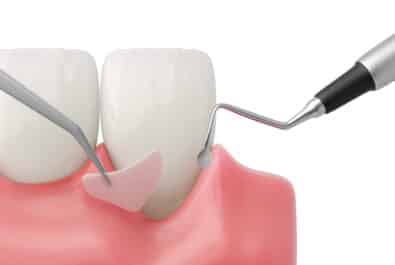When it comes to restoring your lost teeth, you typically have several options to choose from. It can seem overwhelming, at first, when you’re learning the ins and outs of each one, but it’s important to help determine which restoration option will work best for you. That’s why we’ve tried to make understanding dental implants as simple as possible with this short guide. Over the past few decades implants have become increasingly popular and are often the treatment of choice now. Whether you’re missing a single tooth or multiple teeth – or even if you need a full mouth rehabilitation – there are many advantages to choosing dental implants.
How Do They Work?
Unlike other options, these replacement teeth are actually implanted into your gum tissue (hence the name) to offer a more stable and permanent tooth. Dental implants are made of titanium – a biocompatible material that is able to physically fuse with your jawbone through a process called osseointegration. After they’re placed in your mouth, it takes about 3 to 6 months until the implant is fully connected to your bone. A dental crown covers the top portion of the implant to create a natural-looking (and feeling) tooth. Not only will the gap in your smile be filled, but you’ll have a replacement that is just as functional as your natural tooth was.
Are You A Good Candidate?
Not everyone is a good candidate for dental implants, unfortunately. Your dentist will be able to determine if these new teeth would be the right fit for you by considering a couple of factors. Since they rely on your jawbone for stability, your dentist will want to make sure you’ve got adequate bone density (and gum tissue) for the dental implant to anchor itself to. Otherwise, your dentist may recommend a bone or gum graft to help build up the surrounding bone and gum tissue. Additionally, you’ll need to practice excellent oral hygiene – brushing and flossing every day – so your mouth stays healthy!














